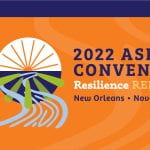![]() Wilkinson, K., Light, J., Nauss, J., Thistle, J., Na, J., Belis, K., (April 9-10, 2013). “Applications of data from eye-tracking studies for improving the design of clinical materials for individuals with intellectual disabilities”. Poster session at the EyeTrackBehavior 2013 – Tobii Eye Tracking Conference on Behavioral Research, Boston MA.
Wilkinson, K., Light, J., Nauss, J., Thistle, J., Na, J., Belis, K., (April 9-10, 2013). “Applications of data from eye-tracking studies for improving the design of clinical materials for individuals with intellectual disabilities”. Poster session at the EyeTrackBehavior 2013 – Tobii Eye Tracking Conference on Behavioral Research, Boston MA.
The conference included several sessions highlighting eye tracking research across a variety of fields and included experimental design, working with participants and data collection, and processing and analysis of gaze data.
Krista Wilkinson and Jen Thistle presented a poster session which described research applying eye-tracking technology to questions of how individuals with intellectual disabilities (ID) process visual information. Such processing can be difficult to test in these individuals, as traditional methods typically present complex verbal instructions and/or require verbal responses. Eye-tracking allows examination of visual attention during free viewing or simple behavioral tasks.
The goal of the research is to improve augmentative and alternative communication (AAC) displays and other visual materials that are used to support the communication of individuals with ID by examining which items within a visual display are most likely to attract and maintain attention, and what changes to the display promote attention.
Supported by (a) the Hintz Family Endowed Chair in Children’s Communicative Competence and (b) NIH P01 HD25995.
Recent Presentations and Publications
- AAC Colloquium, Spring 2025 2025-04-17
- Colloquium, Spring 2024 2024-02-05
- Colloquium, Fall – 2023 2023-09-01
Recent Graduate Student Research

ASHA 2022 Presentations by PSU Faculty and Students
Faculty and students presented at ASHA 2022 in New Orleans, LA.
